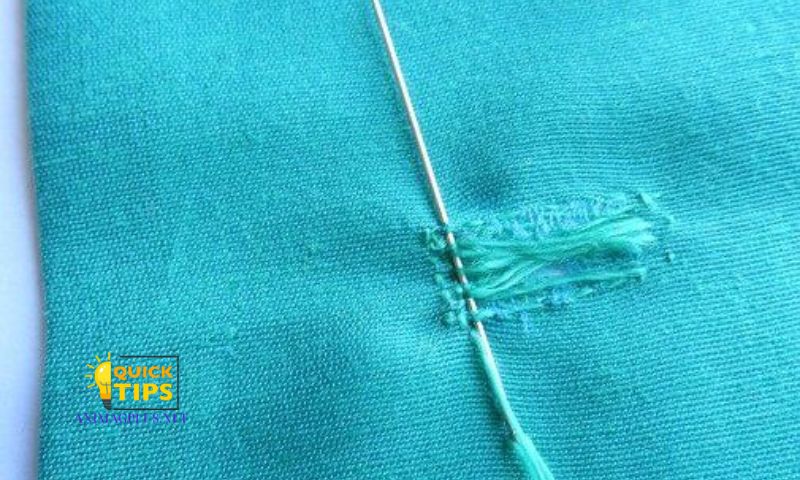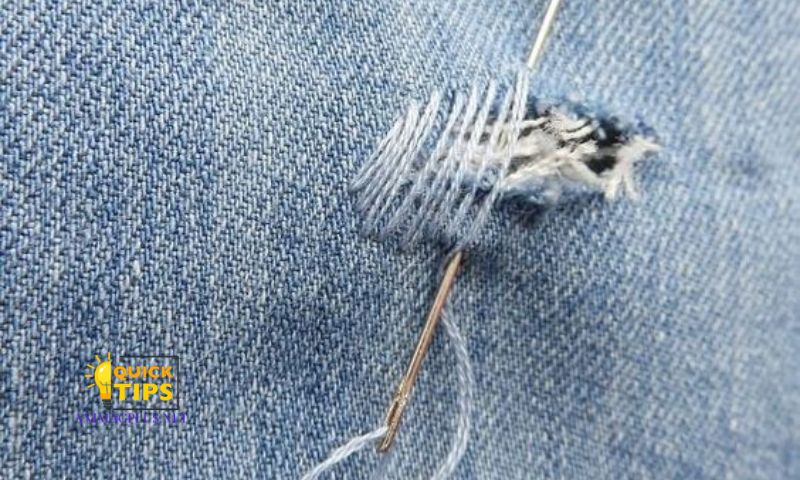In today’s fast-paced world, the art of mending clothes often gets overlooked. However, knowing how to repair your garments can save you money, reduce waste, and even give your clothes a unique, personalized touch. In this article, Animagplus.net will explore essential tools, techniques, and tips for mending torn clothes, ensuring that your favorite items can be enjoyed for years to come.
Essential Tools for Mending Clothes

Before diving into the specific techniques, it’s important to gather the necessary tools. Having the right equipment can make the process smoother and more efficient.
- Needles and Threads: Different fabrics require different needles and threads. Ensure you have a variety of sizes and types, including heavy-duty needles for denim and delicate needles for silk.
- Patches and Fabrics: Keep a collection of fabric scraps and patches. They are useful for covering holes or reinforcing worn areas.
- Scissors: Sharp scissors are crucial for cutting fabric accurately.
- Sewing Machine (optional): While many repairs can be done by hand, a sewing machine can save time and create more durable stitches.
- Other Helpful Tools: Measuring tape, pins, a thimble, and an iron can be incredibly useful during the mending process.
Basic Techniques for Mending Clothes
Understanding basic mending techniques is the foundation of any repair work. Here are some essential methods:
Hand Stitching Techniques
- Running Stitch: A simple stitch ideal for seams and hems. It involves passing the needle in and out of the fabric at regular intervals.
- Backstitch: Stronger than the running stitch, backstitching involves stitching backward to secure the thread, making it perfect for areas that need extra strength.
- Slip Stitch: Used for invisible seams, such as hemming pants or closing small holes, the slip stitch creates a nearly invisible line of stitching.
Machine Sewing Techniques
- Straight Stitch: The most common machine stitch, used for general seaming and topstitching.
- Zigzag Stitch: Ideal for stretchy fabrics and finishing raw edges to prevent fraying.
- Using Different Presser Feet: Specialized feet, like the zipper foot or buttonhole foot, can make specific tasks easier and more precise.
Specific Mending Scenarios

Different types of damage require different approaches. Here’s how to tackle some common issues:
Fixing Holes in Fabric
- How to Patch a Hole: Cut a patch slightly larger than the hole. Place it over the hole, pin it in place, and sew around the edges using a zigzag stitch or hand stitches.
- Reinforcing Weak Areas: Use iron-on patches or interfacing to strengthen areas prone to wear, like elbows or knees.
Mending Seams
- Re-stitching Split Seams: Turn the garment inside out, align the split edges, and sew along the original seam line.
- Strengthening Weak Seams: Sew an additional line of stitches parallel to the original seam to provide extra strength.
Repairing Tears
- Invisible Mending: For small tears, use a slip stitch to pull the fabric edges together without leaving visible stitches.
- Decorative Mending: Use contrasting thread or decorative stitches to turn repairs into unique design elements.
Tips for Different Types of Fabric

Different fabrics require different handling and techniques:
- Mending Cotton and Linen: These fabrics are relatively easy to sew. Use a medium-weight needle and thread, and consider reinforcing areas that experience frequent wear.
- Repairing Denim: Denim is thick and durable, but requires a heavy-duty needle and strong thread. Patches work well for reinforcing worn areas like knees.
- Fixing Delicate Fabrics Like Silk: Use fine needles and silk thread. Be gentle to avoid further damage, and consider using a backing fabric for extra support.
- Handling Stretchy Fabrics Like Jersey and Spandex: Use a ballpoint needle and a stretch stitch to prevent the fabric from puckering. Reinforce seams with a zigzag stitch for added flexibility.
Creative and Decorative Mending Ideas
Mending doesn’t have to be purely functional; it can also be creative and decorative:
- Using Colorful Patches and Threads: Choose vibrant patches and threads to add a pop of color and make your repairs stand out.
- Embroidering Over Tears: Turn a tear into an opportunity for embroidery. Create floral patterns, geometric shapes, or personalized designs.
- Adding Embellishments Like Beads or Sequins: Use beads, sequins, or other embellishments to cover small holes or reinforce weak areas, adding a unique touch to your garment.
Preventive Measures to Avoid Future Tears
Taking care of your clothes can prevent future damage and reduce the need for repairs:
- Proper Washing and Care Tips: Follow care labels, use gentle cycles, and avoid harsh detergents to prolong the life of your clothes.
- Reinforcing Weak Areas Before They Tear: Strengthen elbows, knees, and other high-stress areas before they show signs of wear.
- Regular Maintenance and Inspection: Periodically check your clothes for small holes, loose threads, and other issues. Addressing these problems early can prevent larger repairs later.
Common Mistakes to Avoid
Avoiding common mending mistakes can improve the durability and appearance of your repairs:
- Using the Wrong Thread or Needle: Match your needle and thread to the fabric type to ensure proper tension and strength.
- Ignoring the Fabric Type: Different fabrics require different techniques. Treating all fabrics the same can result in poor-quality repairs.
- Overlooking the Importance of Reinforcing: Skipping reinforcement can lead to repeated repairs. Always reinforce weak areas to extend the life of your repairs.
Conclusion
Mending torn clothes is a valuable skill that can save money, reduce waste, and give your garments a unique, personalized touch. By gathering the right tools, learning basic techniques, and understanding how to handle different fabrics, you can confidently tackle any repair job. Whether you prefer invisible mending or creative, decorative repairs, the tips for mending torn clothes covered in this guide will help you keep your wardrobe in top shape.
Frequently Asked Questions (FAQs)
What’s the best stitch for mending a tear?
The slip stitch is ideal for small tears that require invisible mending. For stronger repairs, a backstitch or machine straight stitch works well.
Can you use a sewing machine for all types of fabric?
While a sewing machine is versatile, delicate fabrics like silk or stretchy materials may require specific needles and stitches. Always adjust the machine settings to match the fabric type.
How can I make my mending look invisible?
Use matching thread and fine stitches, like the slip stitch, for invisible repairs. Ironing the area flat before stitching can also help achieve a smooth finish.
What’s the best way to reinforce weak areas?
Use patches, interfacing, or additional lines of stitching to strengthen weak areas. Reinforce high-stress zones like elbows, knees, and seams to prevent future tears.
By following these tips for mending torn clothes, you can extend the life of your favorite garments and contribute to a more sustainable fashion future.

